How To Clean Glass Inside Toaster Oven

It may be true that you can whip up a show-stopping salmon and bake a cake at a moment's notice. But if anyone were to take a closer look inside your oven—noting the splatters, crumbs, and residue—they might question your prowess. That's because a thoroughly clean kitchen is a hallmark of expertise in itself, and that's why knowing how to clean an oven must be a part of your skill set. Thankfully, Chrissy Hogie, senior product marketing manager at KitchenAid, can show you how it's done. And since most modern ovens have self-cleaning features, it's not as intensive as it sounds.
"There are two distinct types of self-cleaning ovens: high temperature self-clean ovens and steam clean ovens," she says. "It's important to identify which option you have."
Once you do, read on to learn how Hogie recommends cleaning an oven on a regular basis, and the important detail to avoid after you're through. Sure, the master may be the student right now, but that won't be the case for long.
Before You Get Started:
Let's start with the basics: First, check to see how dirty your oven actually is. As a general rule, ovens should be cleaned every three to six months, but this timeline can vary based on how often you use this appliance. Look out especially for prominent splatters or grease stains, since these messes can add their scent to fresh foods and cause harmful smoke during baking. Hint: You'll probably need to clean more often than you think.
"Essentially, if you see soils at the bottom of your oven, it's time to clean," says Hogie.
How to Prepare an Oven for Cleaning:
This might seem obvious, but it's worth noting that everything in your oven should be removed before you clean it. Take out the broiler pan, racks, and grid, as well as any cookware or bakeware that might be stored inside. Then, use a damp cloth to clean the doorframe's edge, stopping about an inch-and-a-half inside the oven.
"Do not let water or cleaner enter the slots on the doorframe," Hogie cautions.
Next, wipe away any loose crumbs that might be in the oven—this will reduce the presence of any smoke, and ensure that your oven keeps its pristine appearance.
"Foods often reacts with porcelain at high temperatures, resulting in staining, etching, pitting, or faint white spots," Hogie notes. "It will not affect the oven's cooking performance, but it can be avoided."
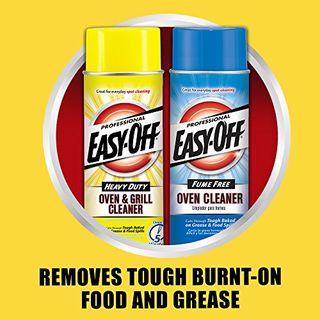
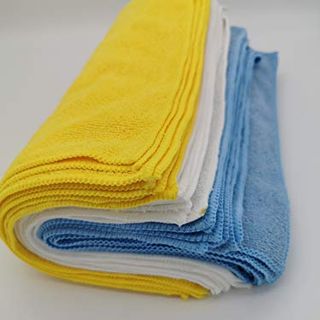
Microfiber Cleaning Cloth
AmazonBasics amazon.com
$13.20
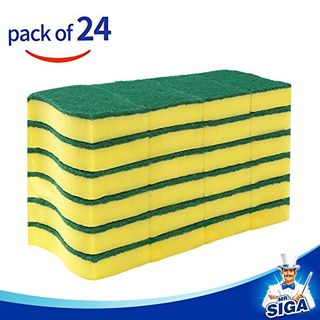
Heavy Duty Scrub Sponge
MR.SIGA amazon.com
$13.99
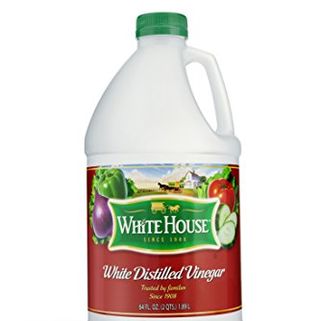
Distilled Vinegar
White House Foods® amazon.com
How to Steam Clean an Oven:
If you have an oven with a steam-clean feature, Hogie says that it's important not to use any cleaners or additives during this process. "This feature is designed for light cleaning, and is not intended to dissolve difficult soils," Hogie continues. "So, steam clean an oven as soon as possible after spills occur. The longer a spill sits in an oven, the more difficult it may be to remove." Common spills include melted cheese, proteins, or sugars, Hogie says, and the two latter examples often require some elbow grease.
Start by pouring 12 ounces of distilled or filtered water on to the bottom of the oven—don't use tap water, because it can leave mineral deposits on the oven's floor. Next, press the button associated with the steam-cleaning cycle, which should take about 50 minutes to complete. When the cycle is finished, open the oven door and use a sponge to wipe up any remaining water. If stains remain, use a nylon scrub to remove them.
"You can also pour vinegar or lemon juice on to the scrub to help remove any mineral deposits, too," she notes.
How to Clean an Older Oven:
Older ovens may not have a self-cleaning option for heavy-duty grease clean-up. Remove the oven racks and set them aside. Start by mixing a baking powder paste using a 1:1 ratio of baking powder to water. Using gloves, spread the paste all over the inside of the oven (do not spread on conduction coils!) and let dry for at least 6 hours. If you can leave overnight, even better!
While the paste in the oven dries, take a look at the racks. Will they fit in your dishwasher? If not, take the same baking powder paster mixture to the oven racks to scrape off grease and residue that needs more help than soap. Rinse and wash normally.
Once the paste has dried in the oven, prep a spray bottle with vinegar. Using gloves and a damp cloth, spray down the dried paste with vinegar and wipe down. Depending on the state of your oven it may take several rounds of vinegar to remove stubborn spots. When the paste is all gone, wipe down the oven again with a damp cloth. Replace the oven racks and take a glass cleaner or stainless spray to the exterior to finish it off.
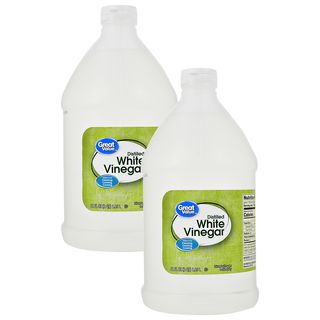
Great Value Distilled White Vinegar, 2 pack
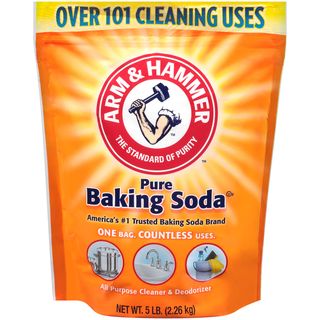
Arm & Hammer Pure Baking Soda, 5 lb
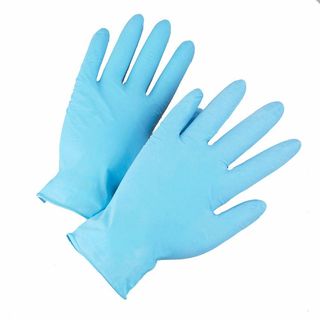
Large Blue Lightly Powdered Disposable Nitrile Gloves (100 Count)
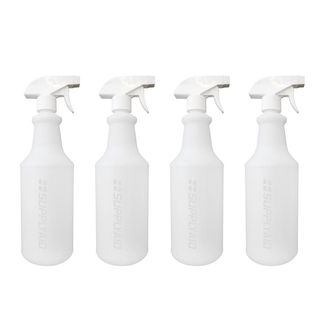
32 oz. All-Purpose Leak-Proof Plastic Spray Bottles
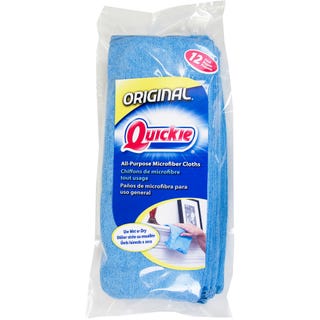
Quickie Homepro Microfiber Towels, 12 Cloths
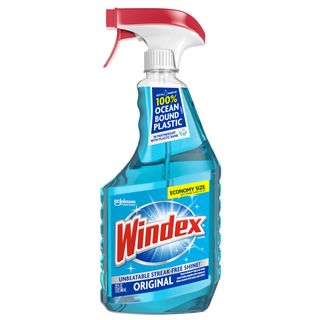
Windex Glass Cleaner Spray Bottle
How to Self-Clean an Oven:
The steps to prepare an oven for its self-cleaning feature are similar to those mentioned above: Remove any surface debris with a damp cloth, and then program the "self-clean" feature to start. The entire process should take between three and five hours, Hogie says, depending on how dirty the oven is. The oven door will open once the cleaning has finished and the appliance has cooled.
"Once the oven has completely cooled, you can remove any ash with a damp cloth," Hogie says. "To avoid breaking the glass, do not apply a damp cloth to the inner glass door before it has completely cooled."
After you've accomplished this task, you might be tempted to line the bottom of your oven with foil to avoid any future spills. Hogie says not to do this, though: "It may permanently damage the finish at the bottom of your oven."
Instead, simply make a rule to keep an occasional eye on the cleanliness of your oven. You are a master in the kitchen, after all.
This content is imported from {embed-name}. You may be able to find the same content in another format, or you may be able to find more information, at their web site.
Follow House Beautiful on Instagram.
This content is created and maintained by a third party, and imported onto this page to help users provide their email addresses. You may be able to find more information about this and similar content at piano.io
How To Clean Glass Inside Toaster Oven
Source: https://www.housebeautiful.com/home-remodeling/diy-projects/a28400163/how-to-clean-an-oven/
Posted by: coledisme1997.blogspot.com

0 Response to "How To Clean Glass Inside Toaster Oven"
Post a Comment